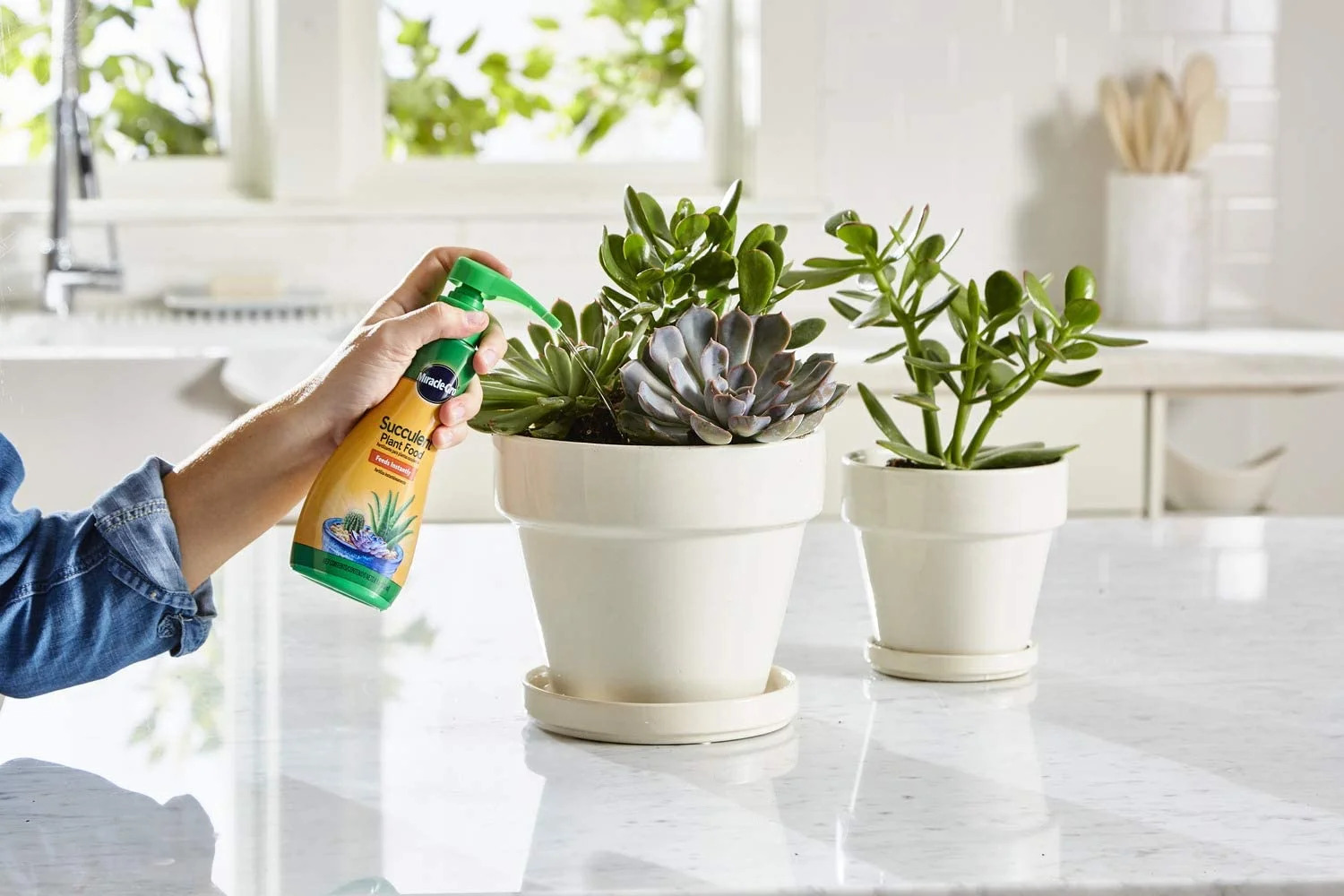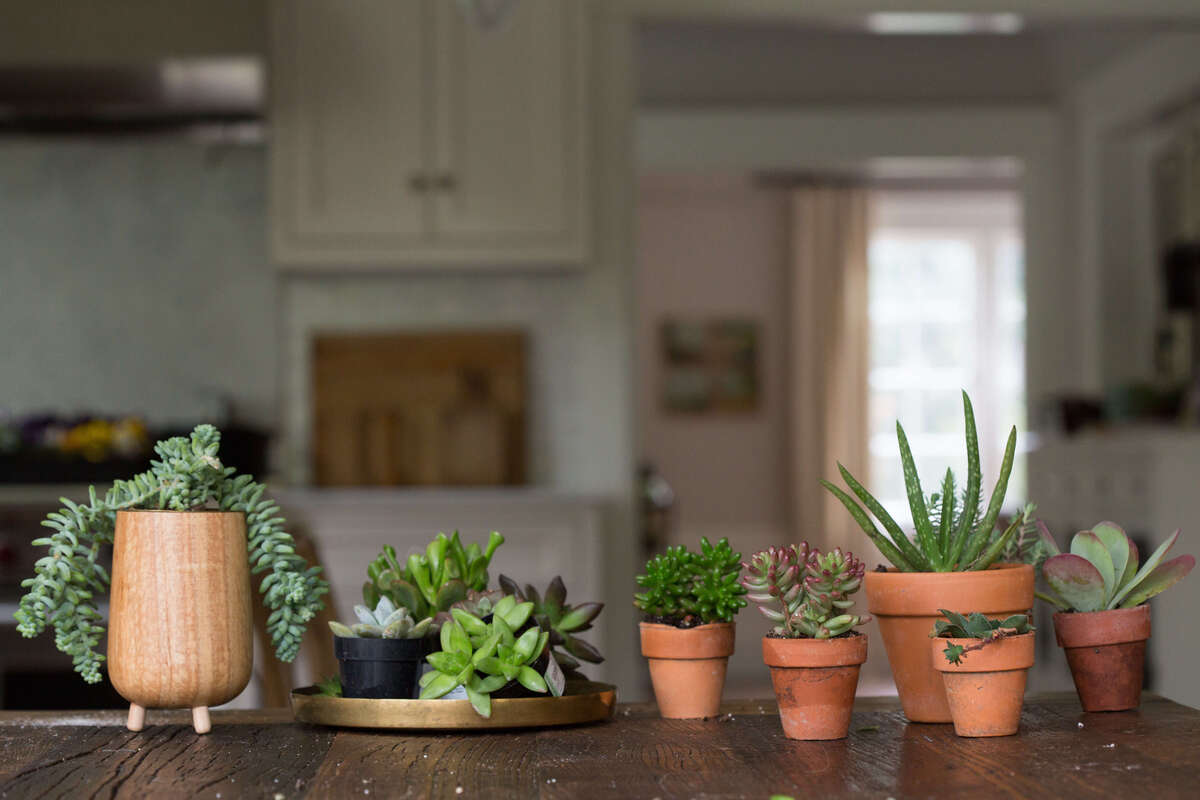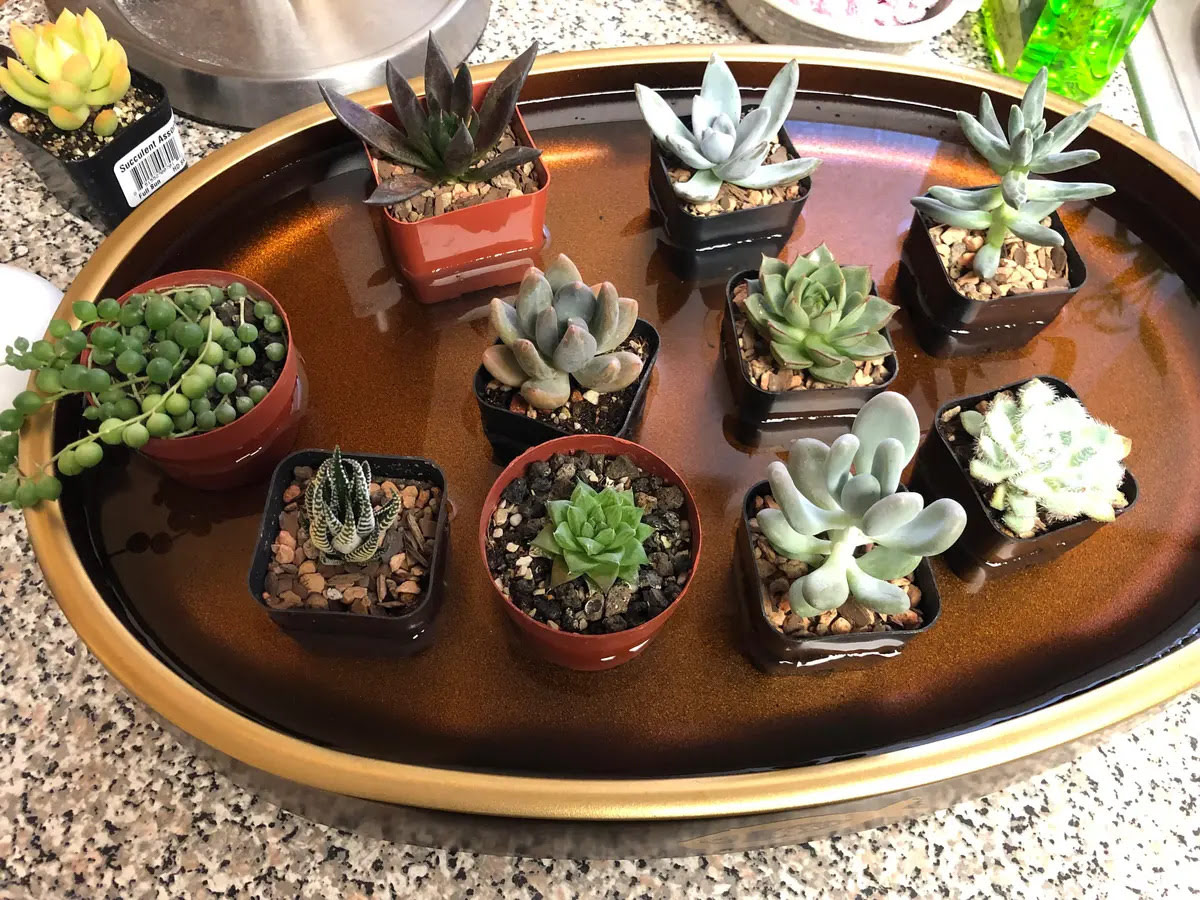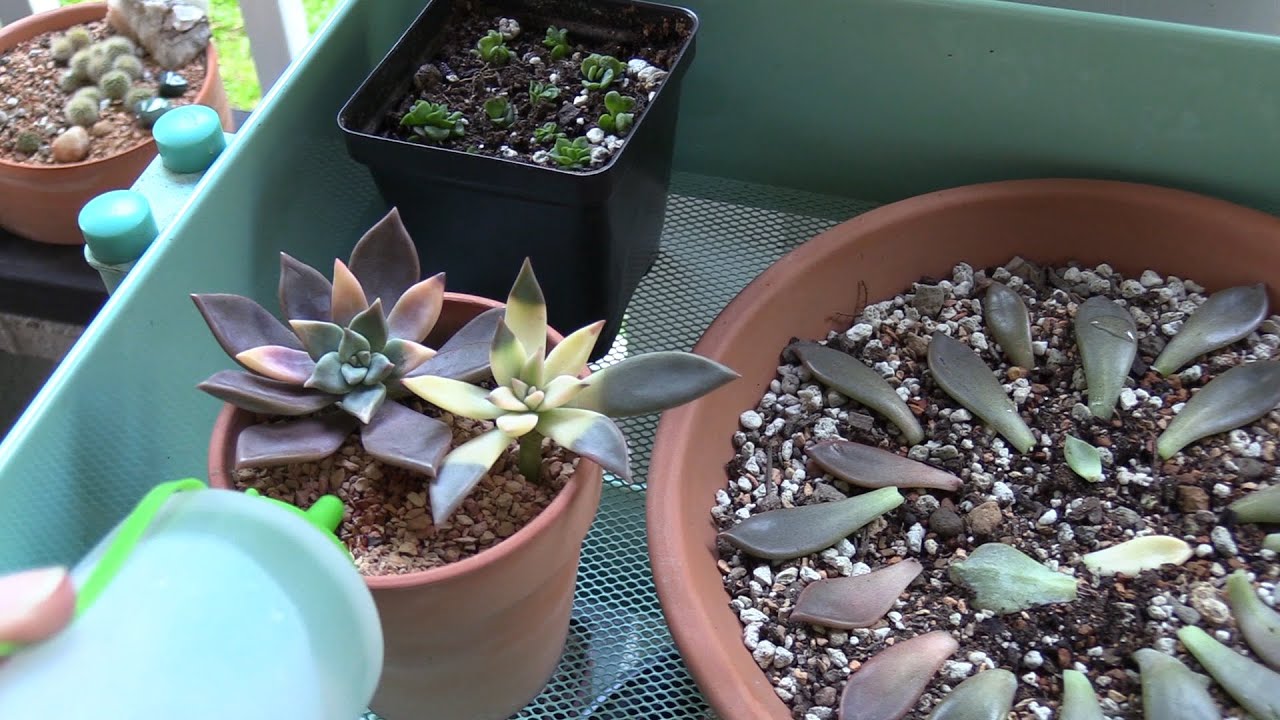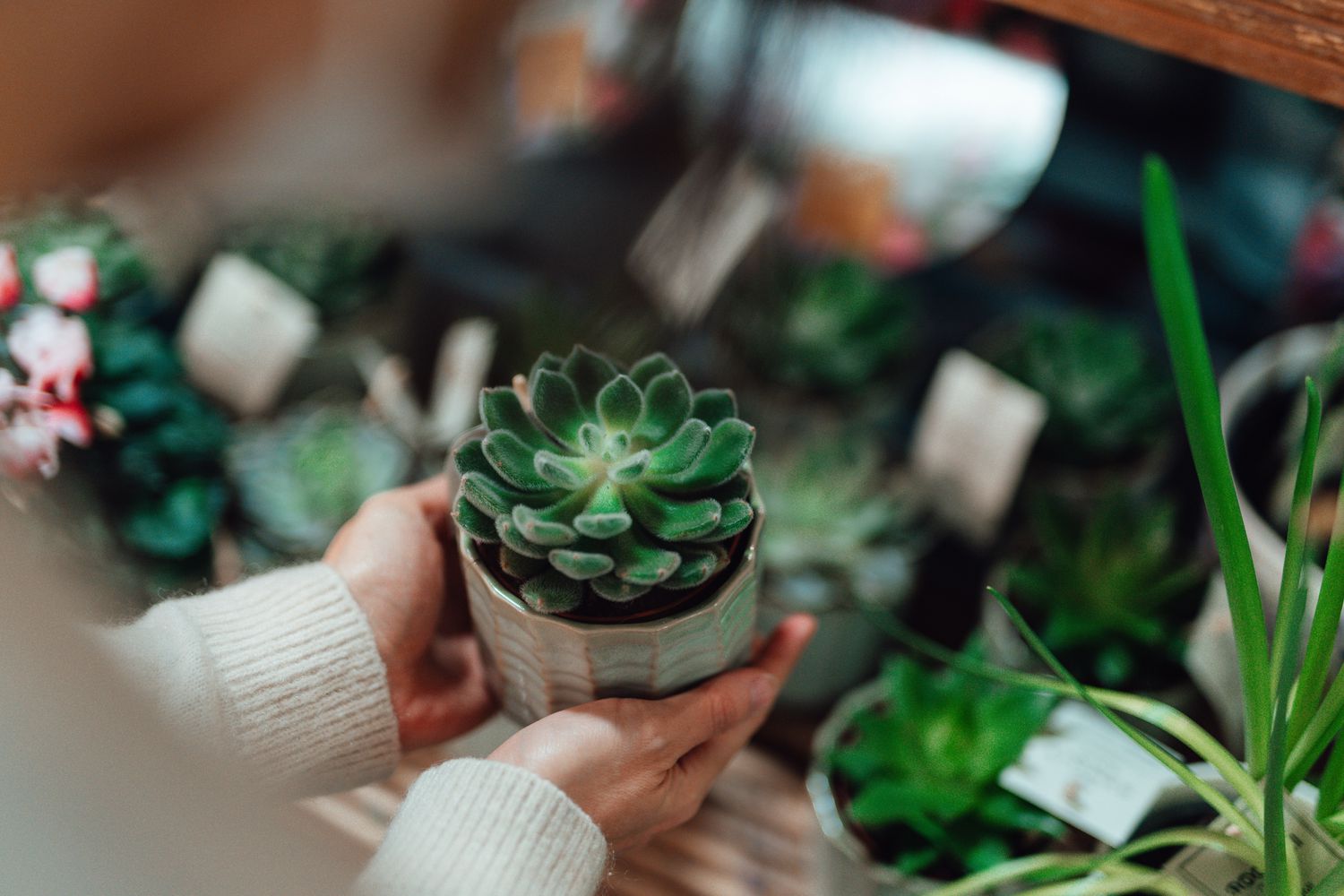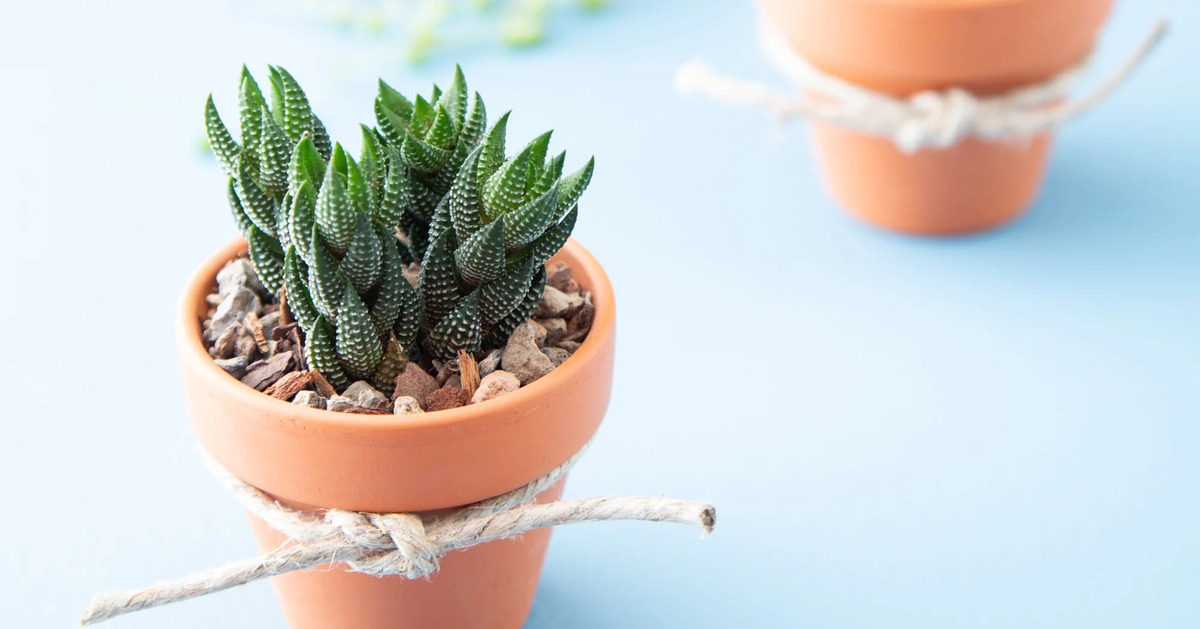Home>Gardening Techniques>Plant Care>How Do You Keep Succulents Small
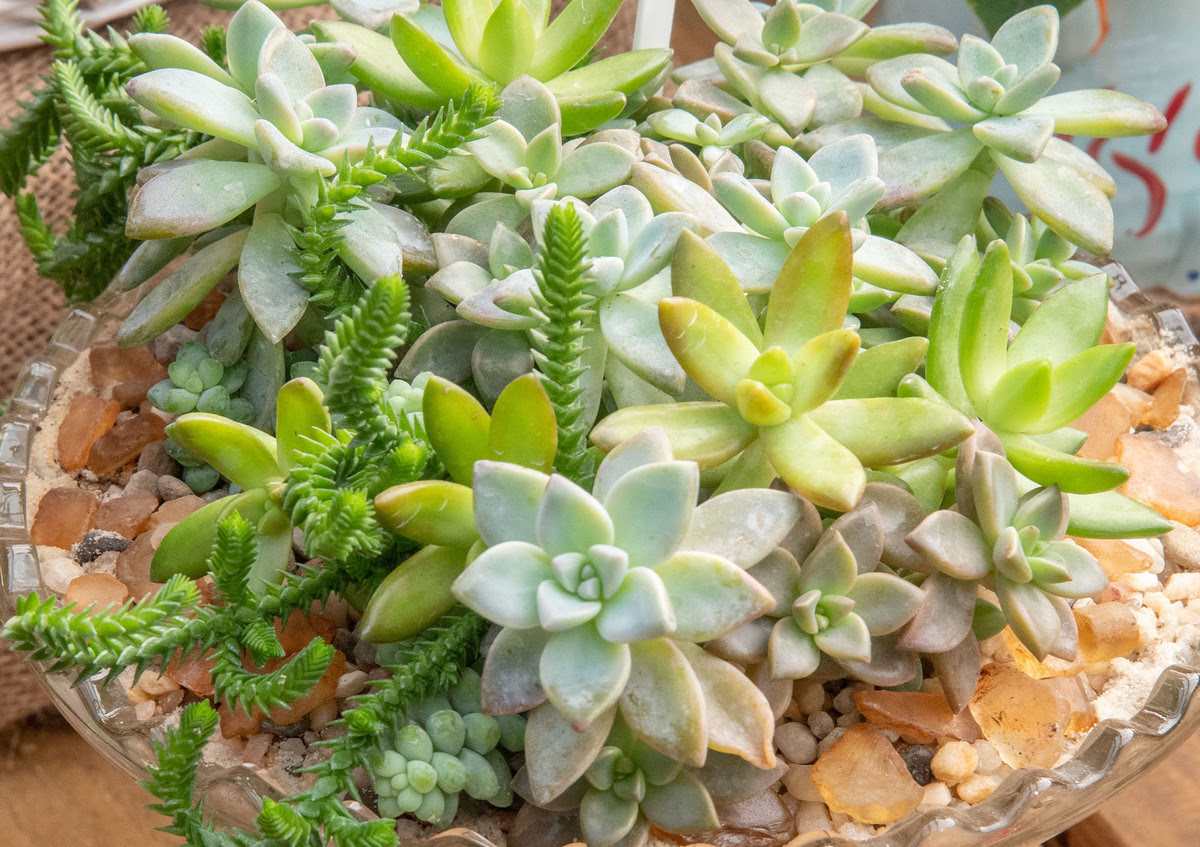

Plant Care
How Do You Keep Succulents Small
Modified: January 22, 2024
Learn the secrets of plant care to keep your succulents small. Discover the best practices and techniques for maintaining the perfect size for your succulent garden.
(Many of the links in this article redirect to a specific reviewed product. Your purchase of these products through affiliate links helps to generate commission for Chicagolandgardening.com, at no extra cost. Learn more)
Table of Contents
Introduction
Welcome to the world of succulents, where beauty and versatility coexist in these fascinating plants. Succulents have gained immense popularity in recent years, becoming a favorite among plant lovers and beginners alike. From their unique shapes and vibrant colors to their ability to thrive with minimal care, it’s no wonder why so many people are captivated by these intriguing plants.
However, as succulents continue to grow, they may outgrow their desired size, becoming too large for the space they inhabit. Luckily, there are ways to keep succulents small and compact, allowing you to maintain their ideal size and shape.
In this article, we will explore effective techniques for managing the growth of succulents, ensuring they stay small and manageable. We will delve into various aspects such as light exposure, watering practices, soil composition, pruning techniques, and the importance of avoiding overcrowding. By implementing these strategies, you can enjoy the beauty of your succulents while keeping them at a size that fits perfectly into your home or garden.
Understanding Succulent Growth Patterns
Before we dive into the techniques for keeping succulents small, it’s essential to understand their growth patterns. Succulents are known for their ability to store water in their fleshy leaves and stems, giving them the ability to survive in arid conditions. This adaptation allows succulents to grow in diverse environments, but it also influences their growth habits.
Succulents typically exhibit two growth patterns: rosette-forming and trailing. Rosette-forming succulents, such as echeverias and aeoniums, have a central point from which their leaves emerge. These plants tend to grow in a compact, circular shape with new leaves emerging from the center. On the other hand, trailing succulents, like string of pearls and burro’s tail, have stems that drape or trail down, creating a cascading effect.
Understanding the growth pattern of your succulent is crucial, as it will influence the techniques you use to keep them small. For rosette-forming succulents, you will focus on maintaining their compact shape, while for trailing succulents, you will aim to control their length and prevent them from becoming too leggy.
Additionally, it’s important to note that some succulents naturally grow larger than others. While you can manage their growth to an extent, keep in mind that each succulent has its own genetic programming that influences its ultimate size. Nonetheless, the techniques we will discuss can help you keep succulents within a desirable range, allowing you to enjoy their beauty without the worry of them outgrowing their space.
Managing Light Exposure
Light is a crucial factor in succulent growth and can significantly impact their size. Understanding how to manage light exposure will help you keep your succulents small and compact.
Most succulents thrive in bright, indirect sunlight. Placing them near a south or west-facing window will provide them with the ideal amount of light. However, if your succulents are receiving too much direct sunlight, they may start to stretch and become leggy in an attempt to seek more light.
To prevent this elongation and maintain a smaller size, you can adjust the amount of light your succulents receive. One way to do this is by placing sheer curtains or blinds over the window to diffuse the sunlight. This will still provide sufficient light for the plants without subjecting them to intense rays.
Alternatively, if your succulents are not receiving enough light and are growing too tall and thin, you can supplement their light needs with artificial grow lights. LED grow lights are a popular choice as they emit the right spectrum of light for plant growth, and you can easily adjust the intensity and duration of light exposure.
Remember to rotate your succulents regularly to ensure even light distribution, as they have a natural tendency to grow towards the light source. By rotating them every few weeks, you encourage symmetrical growth and prevent one side from becoming leggy while the other side remains compact.
Proper light management is essential for keeping succulents small and preventing them from stretching or becoming too large. By finding the right balance of light exposure, you will promote compact growth and maintain the desired size of your succulents.
Controlling Watering Practices
Watering is another crucial aspect of succulent care that can directly influence their growth and size. Proper watering practices will help you keep your succulents small and prevent them from growing too quickly.
Succulents are adapted to survive in arid environments, and their water needs are vastly different from those of typical houseplants. Overwatering is a common mistake that can lead to root rot and excessive growth in succulents. To keep your succulents small and compact, it’s important to follow a few key guidelines when it comes to watering.
The most important rule is to allow the soil to dry out completely between waterings. Unlike other plants that may need frequent watering, succulents prefer infrequent but thorough watering. Wait until the soil is completely dry before watering again, as this will prevent the succulents from growing rapidly and becoming oversized.
Avoid using a watering schedule and instead, rely on visual cues to determine when to water your succulents. Check the soil moisture by inserting your finger about an inch or two into the soil. If it feels dry, it’s time to water. If it’s still moist, wait a few more days before checking again.
When watering, make sure to do so deeply and thoroughly. Water the soil until it runs out of the drainage holes, allowing the excess to drain completely. This ensures that the water reaches the roots and encourages healthy growth without excessive expansion.
Additionally, it’s important to be mindful of the season and adjust your watering practices accordingly. Succulents are more dormant in winter and require less water during this time. Decrease the frequency of watering during the colder months to prevent overgrowth.
By controlling your succulents’ watering practices and avoiding overwatering, you can maintain their size and prevent them from growing too quickly. Remember, less is often more when it comes to watering succulents.
Adjusting Soil Composition
The soil in which your succulents are planted plays a significant role in their growth and overall size. By adjusting the soil composition, you can control the nutrient levels and water retention, helping you keep your succulents small and compact.
When it comes to succulents, well-draining soil is key. Succulents are adapted to arid environments and cannot tolerate excessive moisture. Therefore, it’s important to use a well-draining soil mix that allows water to flow through easily, preventing waterlogged roots and excessive growth.
A common mistake is using standard potting soil, which retains too much moisture for succulents. Instead, opt for a specialized succulent or cactus soil mix, readily available at garden centers or easily made at home. These mixes typically consist of a combination of perlite, coarse sand, and well-draining organic matter, such as coconut coir or compost.
By incorporating perlite or coarse sand into the soil mix, you enhance its drainage capabilities. These materials create air pockets in the soil, allowing excess water to escape quickly and preventing the roots from sitting in damp conditions.
In addition to improving drainage, adjusting the soil composition also helps control nutrient levels. Succulents are adapted to low-nutrient environments, so using a soil mix that is nutrient-rich can lead to excessive growth. By using a well-draining, low-nutrient soil mix, you can slow down the growth of your succulents and maintain their small size.
It’s important to note that the soil composition also affects the overall stability of your succulents. If they are planted in loose, lightweight soil, they may be more prone to toppling over. To counteract this, consider adding a layer of small rocks or gravel to the top of the soil, providing additional stability and anchoring the plants.
By adjusting the soil composition to create a well-draining and low-nutrient environment for your succulents, you can effectively control their growth and maintain a small and compact size. Remember to choose a soil mix specifically formulated for succulents and cacti, ensuring their optimal health and size.
Utilizing Pruning Techniques
Pruning is a valuable technique that can help you keep your succulents small and maintain their desired shape. By selectively removing certain parts of the plant, you can control growth and encourage compactness.
One common method of pruning succulents is the removal of leggy or elongated stems. If your succulent starts to stretch and become leggy, you can trim off the elongated portion to maintain a more compact form. Use a clean, sharp pair of pruning shears or scissors to make a clean cut just above a leaf node or joint. This will promote branching and encourage new growth, leading to a bushier and more compact appearance.
When pruning, it’s important to remove no more than one-third of the succulent’s overall growth at a time. This allows the plant to recover and minimizes stress. If your succulent has multiple stems, prune them individually to maintain a balanced and symmetrical look.
In addition to trimming leggy stems, you can also pinch or prune off any aerial roots that may develop. Aerial roots are roots that grow above the soil surface, often seen in trailing succulents. While they may be a natural occurrence, removing them can help prevent the succulent from becoming overly long and trailing.
Pruning can also be used to remove any damaged, diseased, or dead leaves or stems. Trim away any parts that show signs of decay or infection to keep your succulents healthy and prevent the spread of diseases.
Remember to always use clean and sterilized pruning tools to prevent the transfer of any pathogens or diseases. Wipe the blades with rubbing alcohol or a mixture of water and bleach before and after each use.
By utilizing pruning techniques, you can control the growth of your succulents, maintain their compact size, and enhance their overall appearance. Regular pruning allows you to shape and sculpt your succulents to your desired form while keeping them healthy and thriving.
Avoiding Overcrowding
Overcrowding is a common issue that can lead to unhealthy and unruly succulents. When multiple plants are grown too closely together, they compete for resources such as light, water, and nutrients, causing them to stretch and grow in unnatural ways. To keep your succulents small and maintain their ideal size, it’s important to avoid overcrowding.
When planting succulents, give them enough space to allow for proper air circulation and light penetration. This will prevent them from becoming leggy as they reach for available light. As a general rule of thumb, leave a gap of at least two to three inches between each plant, allowing room for growth and ensuring they have enough space to thrive.
If you already have overcrowded succulents, it’s possible to alleviate the issue by carefully separating them and replanting them in appropriately sized containers. Gently loosen the roots and untangle any tangled stems, being careful not to damage the plants. Once separated, replant them in well-draining soil with sufficient space between each plant.
When selecting succulents for arrangements or container plantings, consider the mature size of each plant and choose varieties that will complement each other without overcrowding. Mix and match different shapes, colors, and textures to create visually appealing arrangements while ensuring that each plant has enough space to grow and thrive.
In some cases, you may need to remove and repot excess succulents that have outgrown their allotted space. You can give away or exchange extra plants with fellow succulent enthusiasts or consider propagating them to create new plants for your collection or to share with others.
Regular monitoring and maintenance are key to avoiding overcrowding. Keep an eye on your succulents’ growth patterns and make adjustments as needed to ensure they have sufficient space to grow and maintain their desired size.
By avoiding overcrowding, you not only ensure healthy growth and maintain the ideal size of your succulents, but you also create visually appealing arrangements or gardens that showcase the unique beauty of each individual plant.
Conclusion
Keeping succulents small and compact is achievable through various techniques that focus on managing their growth and maintaining their desired size. By understanding their growth patterns, such as rosette-forming or trailing, you can tailor your care practices accordingly. Managing light exposure is crucial in preventing succulents from stretching and becoming leggy, while adjusting watering practices helps control growth and prevent overwatering.
Additionally, adjusting the soil composition to provide proper drainage and low-nutrient conditions contributes to maintaining a smaller size. Utilizing pruning techniques allows you to shape and control the growth of your succulents, encouraging bushier and more compact growth. Lastly, avoiding overcrowding ensures that each succulent has enough space to thrive and showcase its unique beauty.
Remember, succulents have their own genetic programming that influences their ultimate size, so it may not always be possible to keep them extremely small. However, by implementing these techniques, you can effectively control their growth and maintain them at sizes that fit well within your home or garden.
With these strategies in mind, you can enjoy the beauty and versatility of succulents while also maintaining their ideal size and shape. So go ahead and cultivate your small and spectacular succulent garden, knowing that you have the knowledge and tools to keep them looking their best at any size.

